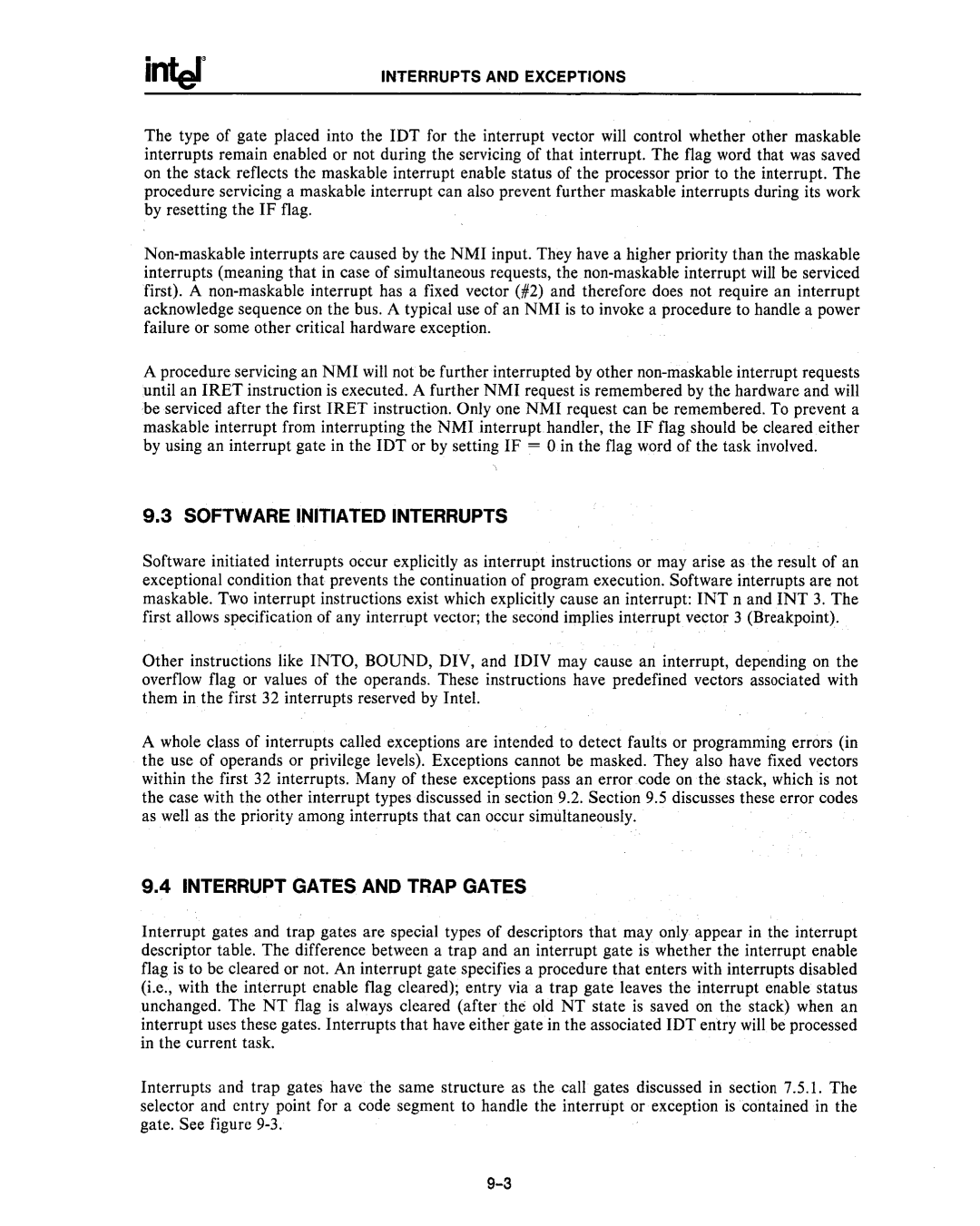
INTERRUPTS AND EXCEPTIONS
The type of gate placed into the IDT for the interrupt vector will control whether other maskable interrupts remain enabled or not during the servicing of that interrupt. The flag word that was saved on the stack reflects the maskable interrupt enable status of the processor prior to the interrupt. The procedure servicing a maskable interrupt can also prevent further maskable interrupts during its work by resetting the IF flag.
A procedure servicing an NMI will not be further interrupted by other
9.3 SOFTWARE INITIATED INTERRUPTS
Software initiated interrupts occur explicitly as interrupt instructions or may arise as the result of an exceptional condition that prevents the continuation of program execution. Software interrupts are not maskable. Two interrupt instructions exist which explicitly cause an interrupt: INT nand INT 3. The first allows specification of any interrupt vector; the second implies interrupt vector 3 (Breakpoint).
Other instructions like INTO, BOUND, DIY, and IDIY may cause an interrupt, depending on the overflow flag or values of the operands. These instructions have predefined vectors associated with them in the first 32 interrupts reserved by Intel.
A whole class of interrupts called exceptions are intended to detect faults or programming errors (in the use of operands or privilege levels). Exceptions cannot be masked. They also have fixed vectors within the first 32 interrupts. Many of these exceptions pass an error code on the stack, which is not the case with the other interrupt types discussed in section 9.2. Section 9.5 discusses these error codes as well as the priority among interrupts that can occur simultaneously.
9.4 INTERRUPT GATES AND TRAP GATES
Interrupt gates and trap gates are special types of descriptors that may only appear in the interrupt descriptor table. The difference between a trap and an interrupt gate is whether the interrupt enable flag is to be cleared or not. An interrupt gate specifies a procedure that enters with interrupts disabled (i.e., with the interrupt enable flag cleared); entry via a trap gate leaves the interrupt enable status unchanged. The NT flag is always cleared (after the old NT state is saved on the stack) when an interrupt uses these gates. Interrupts that have either gate in the associated IDT entry will be processed in the current task.
Interrupts and trap gates have the same structure as the call gates discussed in section 7.5.1. The selector and entry point for a code segment to handle the interrupt or exception is contained in the gate. See figure
